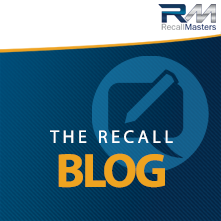Where, Oh Where, did “Service” Go?
Where, Oh Where, did “Service” Go?
A Blog Post by Sean Reyes, Chief Marketing Officer for Recall Masters
The automotive industry is experiencing the most dramatic change since its inception. Many questions abound due to a multitude of policies impacted by manufacturing, legislation, inventory levels, and, of course, the gradual phase-out of internal combustion engines (ICE) vehicles by 2035 – which isn’t as far away as it sounds.
All those actions could be a lengthy blog, in and of themselves, but here, I’d like to focus on service. Not just service departments in general, but customer service as well. To start, almost one hundred years ago, service departments were the origin of dealerships. Manufacturers were making vehicles, but they had no infrastructure in place for those vehicles to be repaired, regularly maintained, or take care of recalls. They certainly couldn’t expect buyers to make a road trip to Detroit every time their vehicle needed an oil change, right? That would be ridiculous. So, manufacturers started franchising their brands to gain market share and provide convenient places for consumers to purchase vehicles and keep their vehicles well maintained thereafter.
An interesting article in Car and Driver shares a study performed by the independent research firm Pied Piper. According to the study, direct-to-consumer brands such as Tesla, Rivian, and Lucid, were the worst performing brands in their Prospect Satisfaction Index (PSI). This self-funded study has been conducted yearly since 2007 and measures customer satisfaction not just amongst brands, but also individual dealerships.
With legislation forcing manufacturers to change their future production and model plans, they may want to think about sacrificing innovation at the expense of service. Great service should always matter as part of protecting the brand. Whether at the manufacturer level, or the dealership, both OEM and dealership have an interest in doing so. If customer service (or service itself) goes down, fewer consumers will consider the brand.
Dealers can use recalls to protect the brand by getting vehicles repaired quickly and building customer loyalty. Recalls aren’t going away, even with electric vehicles (EVs). The numbers show that recalls will not only go up but will also necessitate that dealerships have tech-savvy technicians. Manufacturers that include dealers – rather than exclude them through a push for less on-the-lot inventory and a transition to a “virtual” showroom – will win over consumers.
When oil changes go away, how do dealers connect with customers? As over-the-air (OTA) repairs to patch faulty software become more routine, it may be assumed that consumers will have less of a need for service at the dealership. Not true. While EVs have fewer moving parts, there will continue to be a need for replacement electronic components, alignments, and battery checks. Wear items like brake pads, windshield wipers, and especially tires will require intervention from a technician. The vehicle may be able to manage service alerts remotely, driving more service appointments. OTAs will negate the need for consumers to visit your service department, but the volume of software updates will annoy consumers and overwhelm dealerships. This, of course, will hurt your service revenue’s bottom line, but current trends regarding EV recalls suggests that there will be plenty of work to do. Recalls present significant revenue, protect margins, and provide brand and dealership exclusivity – that won’t go away with the introduction of EVs.
What is changing is the consumer’s loyalty to specific brands. Long and short of it, the OEMs are going to struggle with differentiation as EVs and third-party vehicle operating systems become more standardized. This will be the opportune time for dealerships to position themselves to win in local markets, where service matters to consumers. Start building your customer base with a goal of brand and dealership loyalty now. Every recall (which occur far too often) presents an opportunity for your dealership to accomplish these goals, shore up those customers and protect service revenue. Waiting until it’s a necessity – which is inevitable – may present dealerships with more challenges and an uphill battle. Dealerships that start now will be ahead of the game as the industry continues to evolve.
About the Author


